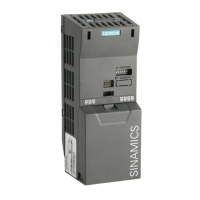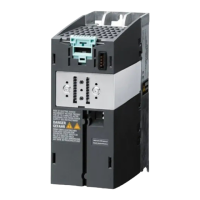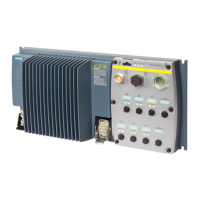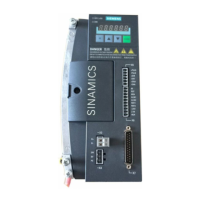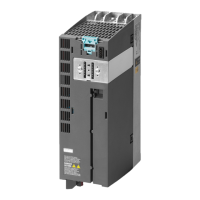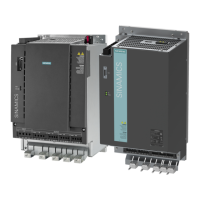Setpoint channel and closed-loop control
7.4 Vector speed/torque control with/without encoder
Inverter chassis units
356 Operating Instructions, 07/2016, A5E00331449A
p1455
Speed controller P gain adaptation signal
p1456
Speed controller P gain adaptation lower starting point
p1457
Speed controller P gain adaptation upper starting point
p1458
p1459
p1466
CI: Speed controller P gain scaling
-dependent Kp_n/Tn_n adaptation (VC only)
p1460
Speed controller P gain adaptatio
n speed lower
p1461
Speed controller Kp adaptation speed, upper scaling
p1462
Speed controller integral time adaptation speed lower
p1463
Speed controller Tn adaptation speed, upper scaling
p1464
Speed controller adaptation speed lower
p1465
troller adaptation speed upper
Dynamic response reduction field weakening (encoderless VC only)
p1400.0
Speed control configuration: Automatic Kp/Tn adaptation active
Droop Function
Description
Droop (enabled via p1492) ensures that the speed setpoint is reduced proportionally as the
load torque increases.
The droop function has a torque limiting effect on a drive that is coupled to a different speed
(e.g. guide roller on a material web). In this way, a very effective load distribution can also be
realized in connection with the torque setpoint of a leading speed-controlled drive. In contrast
to torque control or load distribution with overriding and limitation, with the appropriate
setting, such a load distribution controls even a smooth mechanical connection.
This method is only suitable to a limited extent for drives that are accelerated and braked
with significant changes in speed.
The droop feedback is used, for example, in applications in which two or more motors are
operated with a common shaft and fulfill the above requirements. It limits the torque
differences that can occur as a result of the connection between the motors by modifying the
speeds of the individual motors (drive is relieved when the torque becomes too great).
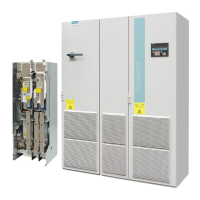
